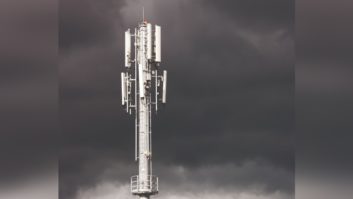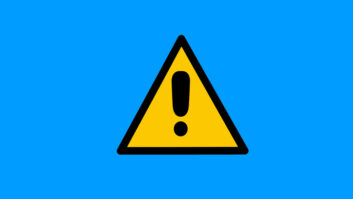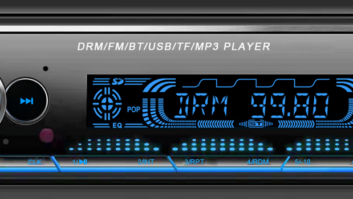The recent computer-related failures that grounded several major airlines remind us that even simple issues can produce massive system failures.

An engineer charged with maintaining a broadcast facility is (or should be) familiar with the many elements that comprise the system. When something happens that takes the station(s) off the air, he or she will investigate the possibilities in a logical manner in order to determine and remedy the cause.
The engineer or manager should know how all the elements in their operation combine to craft the final product. These involve technical and human components.
For the purpose of this article, I urge you to do the opposite of what you normally do: The engineer should consider how you would cause your station to go off the air, not remain on the air with normal programming as is usually the goal. The manager should consider how your station would operate seamlessly without one or more key employees.
I’m asking you to play the part of British game show host Anne Robinson and find the weakest link.
QUESTIONS TO ASK
Once you’ve identified the weak links, consider how best to operate with a substitute or how to fortify the weakness. A substitute may not be ideal, but if it allows continuity in an emergency, it is considered acceptable.
Let’s look first at some examples of the human element.
Commercial stations typically employ a person who schedules commercials, promotional announcements, etc. This is often the traffic manager. Is there someone else who can perform this task in the absence of the traffic manager? Is he/she familiar with the advertising contracts, dayparts and special sponsorships? Is required access log-in information available to those who might perform the task in a pinch?
For music stations, the music director typically assembles the music log. Is there more than one individual qualified to perform this task? Does he/she know the rules established by the program director? Is the scheduling program login information available? Does your station use a research program to select new title adds and drops? If so, is that login information available? Is the substitute familiar with the criteria employed to make the necessary decisions?
You probably employ a full-time, part-time or contract engineer. What if he/she becomes unavailable due to illness, injury or voluntary/involuntary termination? Do you have a qualified substitute? Is he/she familiar with your facility, and have access to the transmitter site(s) and, where appropriate, computer systems? Are procedures and facility interconnection wiring documented and securely maintained? Is there an available list of contractors who perform duties such as field clearing, annual FCC-required AM emissions measurements, satellite dish maintenance and other critical tasks?
For stations with transmitter facilities that are separate from the studio, how do you transfer audio and data between sites? If you use wireless STL and it fails, do you have a backup?
Today, it’s more than just primary audio being sent from studio to transmitter in many instances. If you employ HD Radio, the secondary programs, data and other information must also be sent to the transmitter. Perhaps the traditional 950 MHz STL no longer meets your needs. If you use an unlicensed link, you have no guarantee against interference from other unlicensed devices such as Wi-Fi, routers, baby monitors and other such consumer products. If your studio-to-transmitter link fails, what is your backup plan?
What about remote control for the transmitter(s)? If you depend on a landline link, it may be vulnerable to failure from vehicular contact with a pole, central office equipment malfunction, cable outage due to insects or rodents, etc.
Some means of at least transferring primary audio should be at hand in the event of emergency. This may include but is not limited to using an RPU, broadcasting from the transmitter site using prerecorded (and regularly updated) programming stored at the site — even a dialup connection just to maintain continuity.
Plans should be in place to prepare for such occurrences and procedures rehearsed to account for new personnel, new technology and keeping procedures fresh in everyone’s minds.
PREVENTION IS THE BEST MEDICINE
As you think of ways to take down your facility, consider how you would prevent them.
People familiar with a facility are the best qualified to know its weak points and how to buttress them. What investments are wise to make to ensure staying on the air? These include spare parts, equipment and the training to employ these when it becomes necessary.
Notice I used the word “investments,” not “purchases.” That is what you are doing: investing in an insurance program to keep your station on the air and functioning as close to normal as possible, given a natural or manmade event.
Backup power generators, standby transmitters, switchable studios, alternate audio storage systems and the like are of little use if staff does not know how to engage them. Post an easy-to-understand checklist in the control room so even a non-technical person can perform the step-by-step procedures to engage backup systems should the need arise.
If you can take the time to consider how to take your facility down, so can others.
It is unfortunate, but hackers, disgruntled employees and inadvertent acts can cripple an operation. The latter might include ceiling leaks, mandatory evacuation due to a crisis in your or nearby building, fire, carbon monoxide, nearby police activity, earth movement and acts of God. Being prepared is your best defense.
Most stations depend on computers and the internet for their basic daily activities. Defending against unauthorized intruders, malware and viruses is a task best left to professionals.
A firewall, continuously updated antivirus and antispyware software are “musts” for every computer network. All it takes is one click on a malicious link and your entire network and automation can be brought down. Investing in a well-and secure network is not only wise but mandatory.
Is your data securely backed up off-site? Can you access the backed up data at will (off-hours, weekends, holidays, etc.)?
Hopefully, you’ve gained some insight on how and why to analyze and fortify your facility. Do this often. With the pace of technology ever increasing, an ongoing defense is a necessity.
Share your own preparedness tips. Email[email protected]with “Letter to the Editor” in the subject field.
Tom Osenkowsky is a radio engineering consultant in Brookfield, Conn., and a longtime RW contributor. He has been in the radio broadcast industry since 1975.












